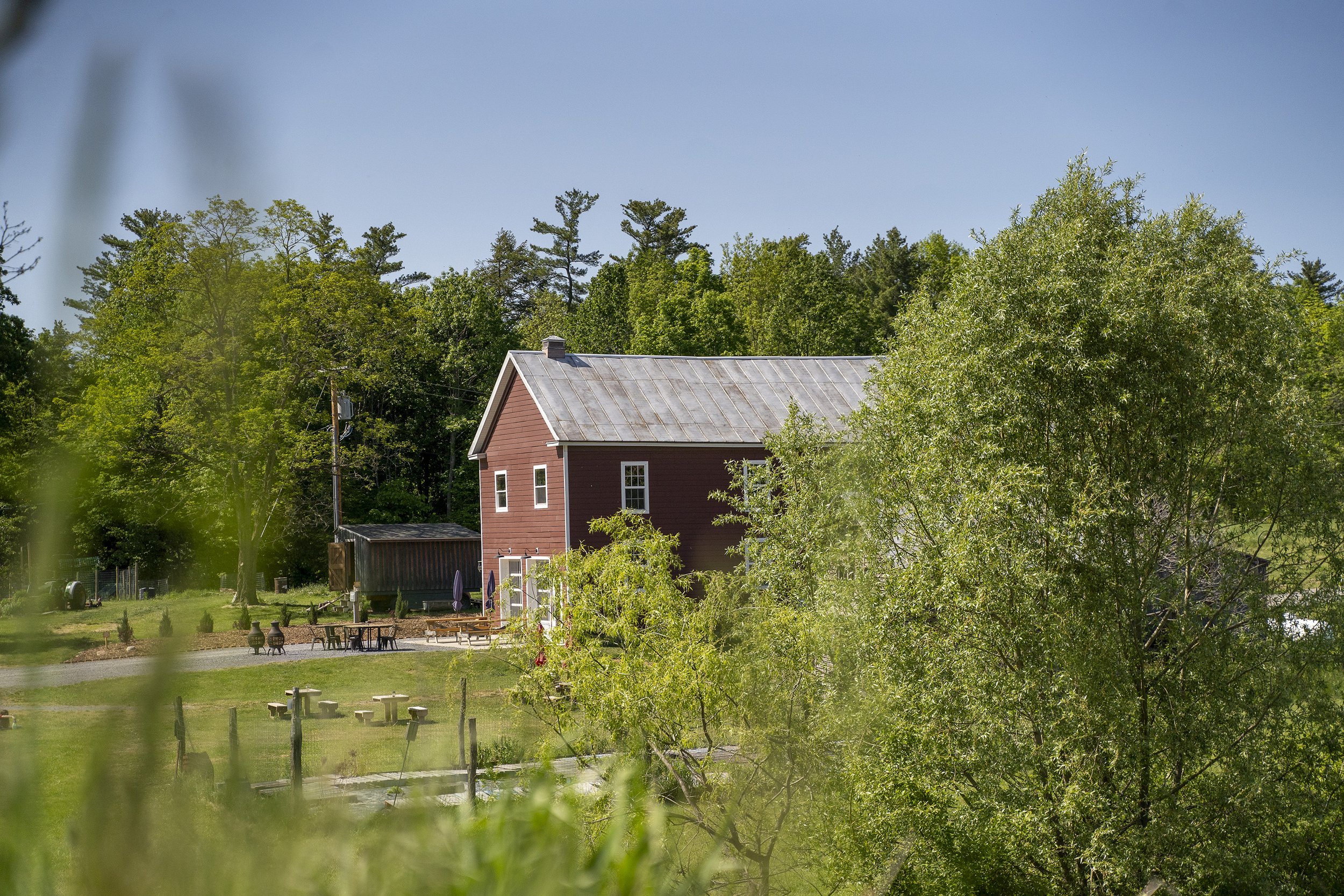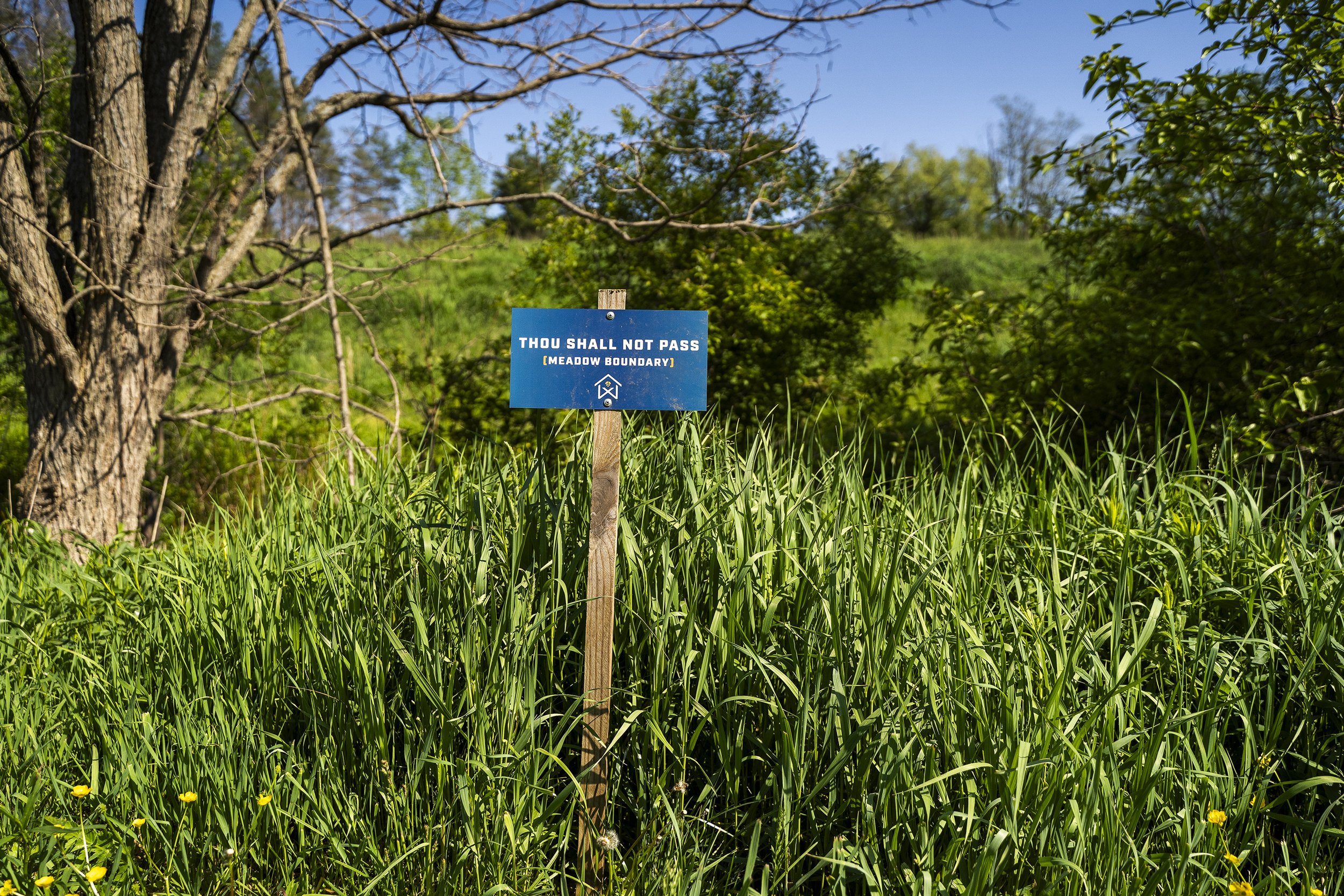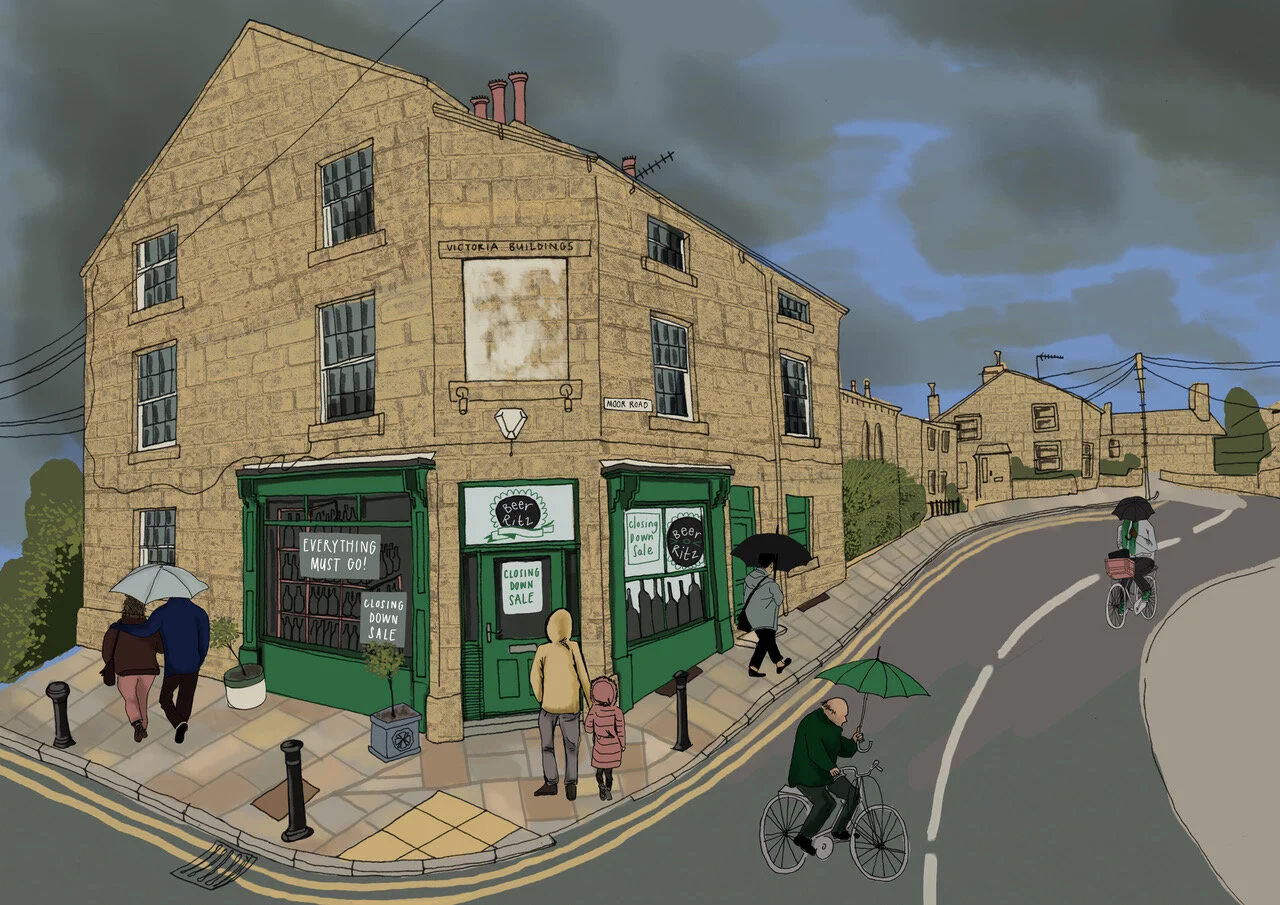Caught On The Hop — Wayward Lane Brewing and the History of New York’s Hop Houses
Schoharie is in New York’s historic hop-growing region, which thrived for over half a century beginning in the mid-1800s. At one point, New York was the United State’s top hop producer. It was so important that Adolphus Busch of American brewing giant Anheuser-Busch purchased an estate in nearby Cooperstown.
Agricultural conditions in the region, including well-drained soil, sufficient precipitation in the spring, and long, sunny days in the summer were ideal for hop growth. Its proximity to rail lines, the Erie Canal, and ultimately, New York City, added a logistical advantage that helped to catapult the hop industry here. Hop houses played a vital role in the production of hops during harvest season, as it was where hops were processed and prepared for sale.
Photography by Melissa Jones
The style of hop house that’s now home to Schoharie’s Wayward Lane Brewing is the most ubiquitous in New York State, and a little investigation of these structures shows design features unique to hop house architecture. Particularly on the inside.
Head brewer and co-owner Adam Rosenthal was giving me the tour, pointing this detail out to me as we transitioned from his brewery’s second-floor office into the barrel room. Though on the same floor, in a sense, the barrel room is several feet higher than the office level and the doorway to access it is approximately three feet wide by five feet high.
Hops were brought to this elevated room after they were harvested for drying and bleaching (the bleaching was done to prevent the growth of mildew and improve the appearance of the hops). It was elevated, at least in part, due to the stove room below needing additional height (the floor of the dry room is higher, but the ceiling is not).
The floor of the drying room consisted of slats that allowed heat from a kiln in the stove room below to dry the hops. It was lined with a mesh material to prevent the hops from falling through. The brewhouse is located where the kiln once stood.
““I moved out here in 2014 with the idea of doing hops, bees and everything else in between.””
Once this process was complete, the hops were transferred to the lower level of the second floor (now the aforementioned office space) for cooling and storage, until they were ultimately dropped into the packing room on the ground floor below. This was also known as the bailing or press room. They were often moved to the lower level through a trapdoor on the floor. The old packing room is now Wayward Lane’s taproom.
***
By the end of the 19th century, New York’s dominance in the hop industry was crumbling. There were several reasons that led to its ultimate decimation; mildew and aphids provided natural challenges. These were less of an issue in the Pacific Northwest, which began to give New York some serious competition (and has since grown to become the largest hop-growing region in the world today.) When Prohibition began in 1920, it put the final nail in the coffin. Though a few farms gave hops a try once the Volstead Act was repealed, none stuck. The industry died in New York State and hop houses were repurposed or neglected though the 1900s to today.
After hops, the region transitioned to dairy farming, which is what the great-grandparents of Andrew Rowles—Wayward Lane’s farm manager and co-founder—were doing nearby in the 1950s. They subsequently bought the site where Wayward Lane is located, and his great-grandmother relocated to the property sometime later.
Andrew isn’t sure hops were grown on the Wayward Lane land back when the hop house was used for its original purpose, but you can find wild bines growing each year along some of the property’s hedgerows. The assumption is that they were.
We do know that Andrew’s great-grandmother was making alcohol on the property long before Wayward Lane’s existence. The German-born Oma Kuhn—or Mama Kuhn as some of the older locals still refer to her—made her own dandelion, elderberry and blackberry wines.
“When I moved out here, in the root cellar, which was just a mud pit, I was unearthing jugs of her old hooch,” Andrew tells me. He says they’ll likely brew a spontaneous ale that incorporates some of the ingredients they’re producing on the property. “We’ll probably name it Oma Kuhn.”
“I moved out here in 2014 with the idea of doing hops, bees and everything else in between, and trying to do some sort of brewing, or mead making,” he adds. Before establishing the brewery, Andrew spent a summer working for the New York hop farm Hager Hops and planted some hops at the Wayward property, but quickly realised it was too much. Beekeeping seemed much more feasible, so he officially started Hop House Farms in 2017 as a beekeeping operation.
Around the same time, Andrew began conversations with some old college friends about starting a brewery on the site. They had already been kicking the idea around but needed a location. Andrew convinced Adam, along with friends Abbie Hansen and Kyle Bergen, to make the move from Colorado to Upstate New York. Wayward Lane Brewery officially opened in 2021.
Though the brewery does occasionally make use of the various ingredients grown and produced on-site (Andrew has a permaculture orchard where they grow a variety of fruit trees, berry bushes and others), unsurprisingly the one that they make the most use of is honey, used here primarily for bottle conditioning.
“Why would we work so hard to make it all New York and all local and then at the very end add dextrose to it to prime the bottles?,” says Adam of his mixed culture and spontaneously fermented beers, which use 100% New York State ingredients.
“Yes, most ferments out, but honey is not 100% fermentable,” he tells me. “I do think it adds something unique [to our beers].”
***
Although Chris Holden of The Hop Guild in New York—a grower-owned hop merchant—says an old hop house has a story to tell no matter what it’s used for, to him, the fact that Wayward Lane is brewing in one is, in his own words, “awesome”. Broadly speaking, he appreciates how the adaptive reuse of these structures means they can leverage their unique history as a form of agritourism.
The Farmers’ Museum in Cooperstown helps tell the story of the region’s historic hop industry with a restored hop house that they relocated to their property just down the road from the Anheuser-Busch estate.
“Having the Pope Hop House at the museum allows us to discuss the impact/influence of hops on the local area,” says Patrick MacGregor, Master Interpreter of Pharmacy and Gardens at The Farmers’ Museum, while explaining how the Farmers’ Museum highlights the hop-growing era as a significant part of the region’s agricultural history and evolution.
“It not only preserves the physical structure, it also helps to educate and inform people about the area they live in,” Patrick adds. “People are frequently unaware of the history right under their feet.”
While The Farmers’ Museum has retained the original design of the Pope Hop House, MacGregor supports restoration and repurposing for uses as Wayward Lane has done.
““Most ferments out, but honey is not 100% fermentable. “I do think it adds something unique [to our beers].” ”
With varying floor heights, irregular doorways and odd window configurations, it can be difficult to retain original hop house designs. However, for a small brewery, the higher floor height in a portion of the ground floor works well for a brewhouse where tank heights exceed standard floor heights in all but the smallest of breweries.
Hop houses could’ve been used for other purposes throughout the year, but they were primarily utilised for just a few weeks during harvest season. During that time, though, there was hard work to be done, not to mention there was also time for socialising and celebration. Aside from the physical remnants, the hop industry left behind a rich cultural heritage in New York State.
Hop picking was unlike most work during this era as men and women, and even children worked together (not unlike historic hop farming in the United Kingdom). While some labour was local, many were brought in from urban areas like Albany and New York City, for the seasonal work. This led to unconventional accommodations and concerns by some as pickers used this getaway as an opportunity to indulge in excess. In an era when the Temperance Movement was growing, this raised some eyebrows.
In 1899, Herbert Myrick wrote in The Hop: Its Culture and Cure Marketing and Manufacture: “All ages and both sexes are everywhere employed, so that besides providing accommodations for them to be comfortable, due regard for the moralities of life should also be provided for. The absence of all restrictions, the indiscriminate huddling together of the sexes, the character of the work and the freedom that follows the day’s tasks, all combine to tempt toward drink and cohabitation. Scandalous abuses have thus occurred…”
Indeed, some farmers didn’t appreciate those simply looking for a break from the hot summer city to find love and merriment in the countryside, particularly at the nighttime dances known as “hops”.
Thankfully, Wayward Lane has a far more contemporary attitude, with the brewery happy to welcome people to their property to escape their normal day-to-day. They try to make it a space that’s welcoming to all, not just beer enthusiasts, with indoor/outdoor games, food trucks, two performance spaces, markets and even a few chickens running around—all of which provide an atmosphere to complement the beer on tap.
“I’ve lost a lot of privacy, obviously, since we opened,” Andrew, who lives on the property, tells me. “And that’s ok with me as long as it’s not seven days a week.”
***
After just two years in operation, Wayward Lane is already beginning to outgrow the hop house. As a result, many areas of the brewery are being forced to be multi-purpose.
“It’s getting difficult to be efficient because we’re constantly moving stuff back and forth,” Adam tells me.
“We continuously expand in the back there in the brew area,” Andrew says. “We’ve now maxed out our tank space. We’ve over doubled, maybe tripled our original fermenter capacity, and we’re still looking at more, which would involve an expansion out the back of the hop house.”
The good news is they have every intention of retaining the integrity of the historic structure. The brewery’s growth has also had an impact on farming activities. Andrew tells me it has left him with only his house, garage, and a trailer to meet all his farming needs. He could probably do with a hop house of his own.
Beyond that, he’d also like a more refined space for people to gather on the property. Perhaps something overlooking their pond. An ideal spot to take in a view of the countryside, sip a dandelion ale and toast in thanks to Oma Kuhn.









































